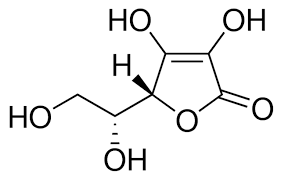Isoascorbic Acid

Product Description
Isoascorbic Acid, also known as Erythorbic Acid, is a stereoisomer of ascorbic acid (vitamin C) and finds various industrial applications.
Product:
Isoascorbic Acid
CAS:
89-65-6
Synonym:
Erythorbic Acid; Glucosaccharonic acid; D-erythro-Hex-2-enono-1,4-lactone
Structure:

Typical Characteristics
Appearance
White to slightly yellow crystalline solid
Density
1.374 g/cm3
Melting point
174 °C (decomp)
Molecular Weight
176.12
Odor
Odorless
Purity
98%
Uses, Applications & Markets
Key applications
get a quote
We Offer Isoascorbic Acid
in various grades
A few of the grades available are listed below:



Isoascorbic Acid used in many
industry applications
Isoascorbic Acid, also known as Erythorbic Acid, is a stereoisomer of ascorbic acid (vitamin C) and finds various industrial applications. Here are some of its common uses:
- Food Additive: Isoascorbic Acid is commonly used as a food additive, particularly as an antioxidant and preservative. It helps prevent the oxidation of food products by scavenging free radicals and inhibiting the degradation of lipids and pigments. As a result, it extends the shelf life of various food items, including processed meats, canned fruits, beverages, and baked goods. Isoascorbic Acid is also utilized to maintain the color, flavor, and nutritional quality of food products during storage and distribution.
- Beverage Industry: It is extensively used in the beverage industry as an antioxidant and stabilizer for improving the shelf stability of fruit juices, soft drinks, alcoholic beverages, and other liquid formulations. Isoascorbic Acid helps prevent the browning and flavor deterioration of fruit juices and preserves the freshness and aroma of beverages over time. It also enhances the clarity and appearance of certain beverages by minimizing haze formation and sedimentation.
- Food Processing: Isoascorbic Acid is employed in food processing applications to prevent enzymatic browning and oxidative rancidity in fruits, vegetables, and seafood products. It acts as a processing aid or ingredient in various food formulations, including jams, sauces, dressings, and frozen foods. Isoascorbic Acid helps maintain the visual appeal and nutritional value of processed foods by inhibiting undesirable color changes and off-flavors caused by oxidation reactions.
- Meat and Poultry: In the meat and poultry industry, Isoascorbic Acid is used as an antioxidant and curing agent in the production of cured meats, such as bacon, ham, sausage, and deli meats. It helps accelerate the curing process, improve color development, and prevent the formation of nitrosamines, which are potentially carcinogenic compounds. Isoascorbic Acid also enhances the stability and flavor profile of cured meat products during storage and cooking.
- Cosmetics and Personal Care: Isoascorbic Acid is utilized in cosmetics and personal care products for its antioxidant properties and skin benefits. It is often included in skincare formulations, such as serums, creams, and lotions, to protect the skin from oxidative stress, UV radiation, and environmental pollutants. Isoascorbic Acid helps reduce the appearance of fine lines, wrinkles, and hyperpigmentation by promoting collagen synthesis and inhibiting melanin production.
- Health Supplements: Isoascorbic Acid is used in the production of dietary supplements and fortified foods to provide a source of vitamin C and enhance nutritional intake. It is commonly included in multivitamin tablets, effervescent powders, and energy drinks as a bioavailable form of vitamin C. Isoascorbic Acid supplements may help support immune function, collagen formation, wound healing, and overall health and well-being.
- Industrial Applications: In addition to its food and beverage uses, Isoascorbic Acid has industrial applications in various sectors, including pharmaceuticals, textiles, and water treatment. It serves as a reducing agent, chelating agent, or stabilizer in chemical processes, analytical techniques, and industrial formulations. Isoascorbic Acid is valued for its versatility, stability, and compatibility with other ingredients in diverse industrial applications.